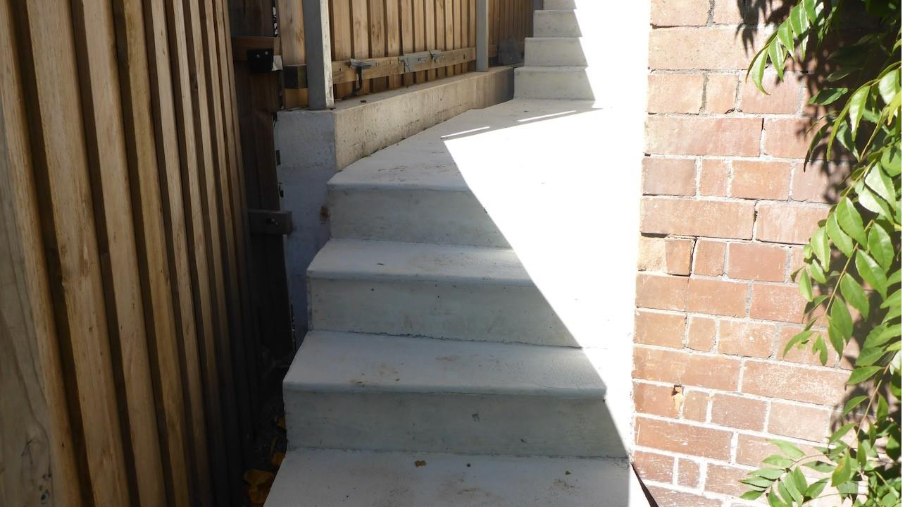Navigating Unauthorised Works

Monday 6 October 2025
A Case Study of an Unapproved External Staircase
Property owners and developers often face complex town planning challenges, especially when dealing with existing structures or modifications that haven’t been formally approved. A recent example involved a residential property with unapproved external stairs.
This project highlights the intricacies of navigating planning regulations and how understanding the best Approval Pathway methods prior to undertaking works can save you time and money in the long term.
The residential property in question had unauthorised stairs constructed which unknowingly encroached on the neighbouring property. This meant the property Owner was in breach of local planning regulations and was at risk of Council imposing a formal notice against them.
Formal Council Notice’s often result in the following;
- Legal Risks: Potential orders for demolition or rectification from the local council.
- Financial Implications: Costs associated with legal proceedings and potential fines.
- Insurance Challenges: Difficulties in obtaining or maintaining insurance coverage.
To mitigate these risks prior to engaging Parker Scanlon, the property owner applied for a Building Information Certificate (BIC). Which is a formal document issued by the local council confirming that no enforcement action will be taken against an existing structure for a period of 7 years. It's especially useful when:
- Unapproved works have been carried out.
- Buying or selling a property with unapproved works.
- Seeking assurance that the council won't demand demolition or rectification.
However, the initial application for the BIC was refused by Council, due to a requirement for additional fencing and screens to ensure privacy and visual amenity for the neighbouring building was maintained.
Once Parker Scanlon was engaged for the project, our Town Planning Team prepared and lodged the appropriate DA for the fencing and privacy screens. After the approval consent for the DA was received, we were then able to reapply for the Building Information Certificate for the completed unauthorised stairs. This step was crucial to regularise the unapproved structure and prevent potential enforcement actions. The reapplication process involved:
- Rectifying Issues: Addressing any non-compliance identified in the initial BIC application.
- Providing Documentation: Submitting updated plans and compliance reports.
- Council Inspection: Allowing council officers to inspect the property to ensure compliance.
The Council then issued the Building Information Certificate, providing the property owner with legal protection against future enforcement actions for the unapproved stairs.
This case underscores several important lessons for property owners and developers, not only in Sydney, but NSW wide, to ensure the appropriate Approval Pathway is understood and followed prior to undergoing any development works.
- Compliance is Crucial: Ensuring all structures have the necessary approvals is essential to avoid legal and financial complications.
- Understand the Approval Processes: Familiarise yourself with the requirements for Building Information Certificates and Development Applications.
- Seek Professional Advice: Consulting with planning professionals can help navigate complex regulations and improve the chances of approval.
By adhering to these practices, property owners can mitigate risks and ensure the success of their development projects, which ultimately saves time, money and stress.
Back to News